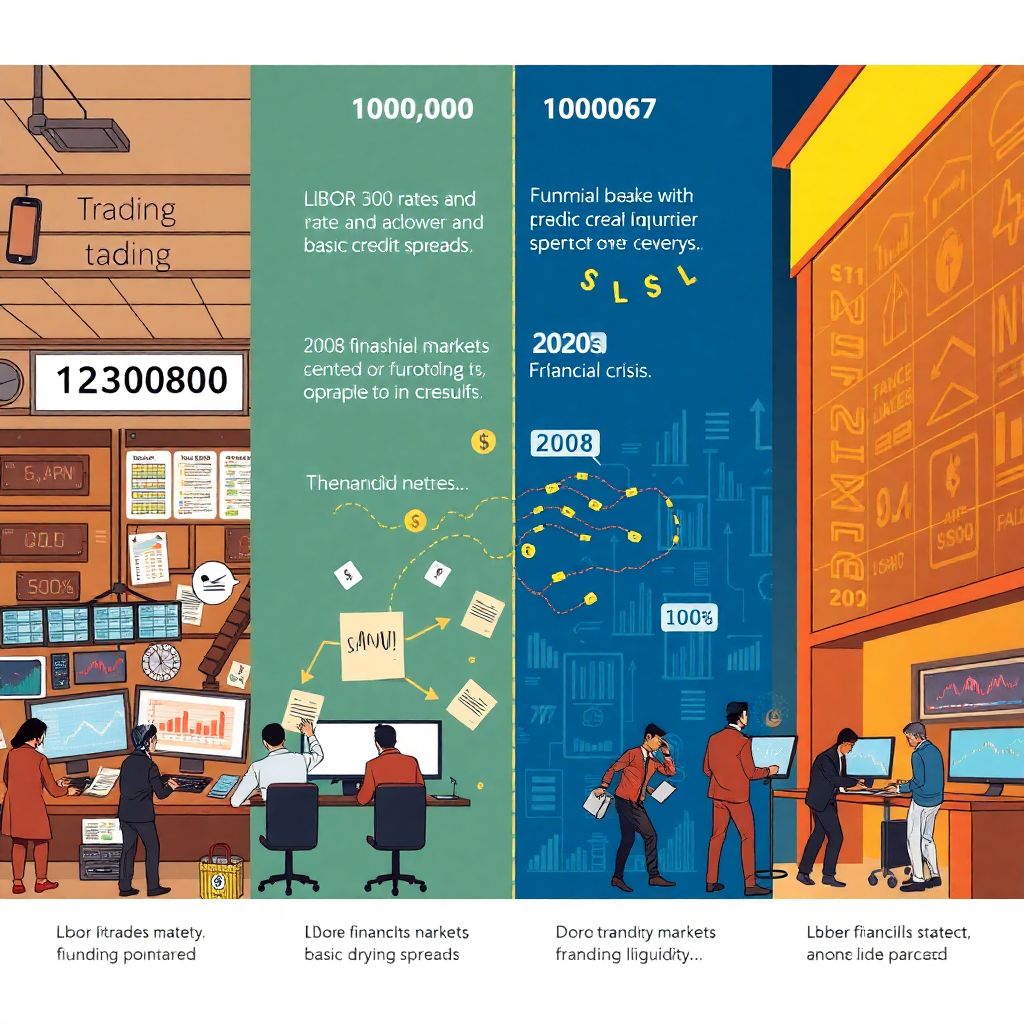Historical Context: From Manual Observation to Algorithmic Precision
Back in the early 2000s, funding liquidity was a term mostly reserved for central banks and institutional desks. Traders relied on basic credit spreads and interbank rates like LIBOR to gauge stress in the system. During the 2008 financial crisis, liquidity dried up overnight, and traditional measures failed to provide early warnings. That cataclysm highlighted a brutal lesson: without real-time visibility into funding conditions, both traders and policymakers are blind. Since then, the focus has shifted toward developing indicators that can capture liquidity tensions dynamically, not just at end-of-day.
Modern funding liquidity indicators now aim to capture intraday stresses and shifts in funding costs across different assets. With the rise of electronic trading platforms and APIs, retail and institutional traders alike can now tap into real-time scanning tools previously reserved for the big players. It’s no longer about waiting for Bloomberg headlines—it’s about anticipating stress before the market reacts.
Core Principles of Funding Liquidity Indicators
At the heart of funding liquidity indicators lies a simple question: how easily can market participants secure short-term capital without significantly impacting the price? These tools measure the ability of institutions to fund themselves, typically over short horizons like overnight or one week. When funding is tight, costs rise, spreads widen, and risk tolerance plummets.
Reliable indicators include:
1. Repo Rates – A sudden spike signals reduced trust between counterparties.
2. Overnight Index Swaps (OIS) Spreads – A widening spread often precedes volatility in equities and credit.
3. Cross-Currency Basis Swaps – Deterioration here flags global USD liquidity stress.
4. Bid-Ask Spreads on Short-Term Instruments – Widening spreads suggest falling liquidity in money markets.
These indicators, when monitored in real time, help traders spot stress before it spills into broader asset classes. Think of them like pressure gauges: subtle shifts in one area can foreshadow larger market dislocations.
Real-Time Applications: How Traders Use Funding Liquidity Scans

Many algorithmic trading desks now incorporate funding liquidity scans into their signal pipelines. For example, when the EUR/USD cross-currency basis suddenly drops, it may suggest US dollar funding stress in European markets. For a trader on leveraged FX positions, this could be an early sign to reduce exposure or hedge currency risk.
Here’s how real-time scanning can be implemented:
1. Integrate APIs from data providers – Pull live repo rates, swap spreads, and TED spreads.
2. Set trigger thresholds – Use historical volatility to define abnormal shifts.
3. Cross-reference with price action – Combine with equity or bond market signals.
4. Automate alerts and trade decisions – For example, reduce long positions when liquidity stress is detected.
One hedge fund reportedly uses a composite liquidity index fed by multiple real-time sources to adjust portfolio leverage dynamically. If the index crosses a pre-set stress level, their system automatically reduces margin utilization. That kind of proactive response wouldn’t be possible without fast data and smart interpretation.
Common Misconceptions That Derail Trading Decisions
Misreading funding liquidity indicators can be just as dangerous as ignoring them. One classic mistake? Assuming that rising repo rates always mean a crisis is brewing. In fact, end-of-quarter balance sheet adjustments can temporarily inflate repo rates without signaling systemic danger.
Other misconceptions include:
1. Confusing funding liquidity with market liquidity – The former is about access to short-term cash; the latter, about ease of trading assets.
2. Assuming one indicator is sufficient – No single metric reveals the full picture. Traders need a dashboard, not a thermometer.
3. Using stale data – Many indicators are reported with a lag. Real-time scanning means nothing if the source is delayed.
Funding indicators are nuance-heavy. For instance, a widening OIS spread during a Fed rate hike cycle might be entirely benign. Context matters, and traders must interpret indicators within macro narratives.
Expert Tips: Making the Most of Liquidity Scanning
To get a leg up, experienced traders recommend a blend of quantitative tools and qualitative awareness. Here’s what pros suggest:
1. Build custom dashboards – Aggregate funding signals with color-coded stress levels.
2. Backtest your alert levels – Don’t rely on arbitrary thresholds. Use historical events to calibrate.
3. Monitor central bank actions – Liquidity facilities and FX swap lines often precede visible changes in funding conditions.
4. Stay nimble – Use funding signals as a backdrop for risk management, not as standalone signals.
Real-time liquidity scanning doesn’t guarantee profits, but it sharpens your edge. It helps you understand when the tide is pulling back—so you’re not caught swimming naked.
Bottom Line

In today’s interconnected market, funding liquidity indicators are more than just technical tools—they’re early-warning systems. Real-time analysis allows traders to anticipate market stress, adjust exposure, and avoid unnecessary drawdowns. As trading becomes more automated and global, those who master the subtleties of liquidity scanning will stay ahead of the curve.

